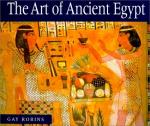|
This section contains 716 words (approx. 3 pages at 300 words per page) |

|
Status. Priests in ancient Egypt were members of the larger society. They were religious specialists, but many priests also held civil positions simultaneously or before and after serving in the temple. They cannot be conceived to be like modern priests.
Dual Positions. From the Old Kingdom (circa 2675- 2130 B.C.E.) through the New Kingdom (circa 1539-1075 B.C.E.) few details of the lives of individual priests are preserved. Individuals had their priestly titles carved on statues and in tombs, but without further details. These lists, however, demonstrate that men who held priestly titles often also held civil titles. Moreover, the highest priestly posts seem to have been held by men who also held the highest civil ones. For example, Hapuseneb was both First Prophet of Amun and vizier (prime minister) in the reign of Hatshepsut. Montuemhet, who lived in...
|
This section contains 716 words (approx. 3 pages at 300 words per page) |

|




